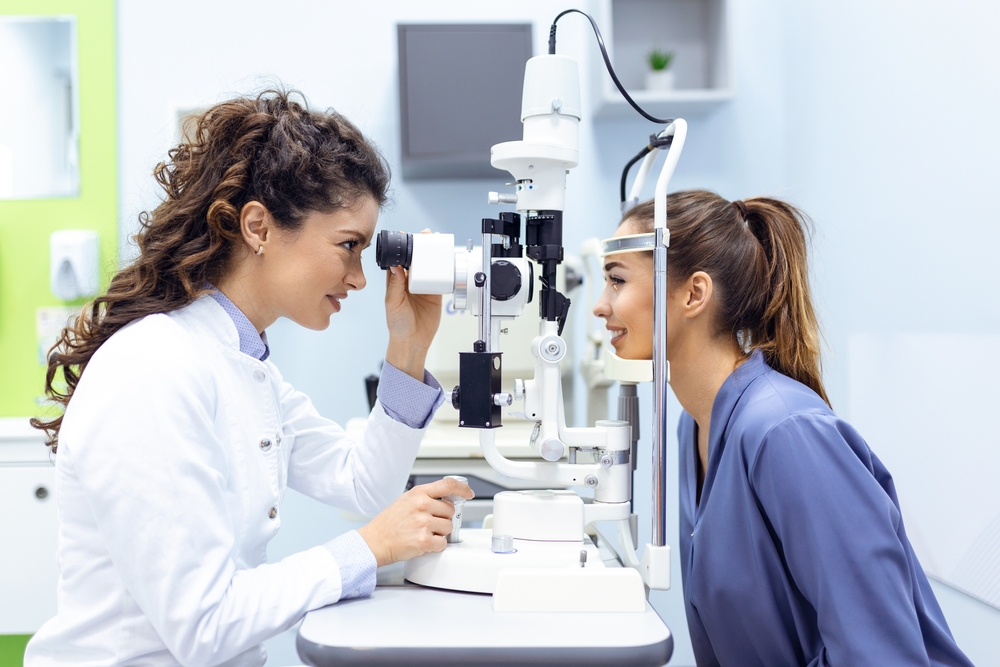Featured
With the increasing usage of innovation, direct exposure to ecological variables, and the natural aging procedure, taking positive steps to shield your eyes is crucial. In this blog, we'll discuss some of the most typical eye problems and practical suggestions on how to stop them, ensuring you preserve optimal vision throughout your life.

- Nearsightedness (Near-Sightedness):
Myopia, or near-sightedness, is a problem where distant items show up blurred while nearby objects remain clear. It takes place when the eye is as well long, or the cornea is as well curved, causing light to concentrate before the retina. Nearsightedness prevails in children and young people, and its frequency has actually enhanced due to raised display time.
Prevention:
Limit display time and urge routine breaks to prevent eye strain. Advertise outdoor tasks, as research studies suggest that spending quality time outdoors can reduce the danger of myopia growth in children. If you are diagnosed with myopia, wearing rehabilitative lenses such as glasses or contact lenses can help handle the problem. 2. Hyperopia (Far-Sightedness):
Hyperopia, or far-sightedness, is the opposite of nearsightedness. It occurs when far-off things are seen clearly, yet close things appear blurry. Hyperopia occurs when the eye is too short or the cornea is also level, triggering light to concentrate behind the retina.
Prevention:
Normal eye tests can assist identify hyperopia early. Comparable to myopia, rehabilitative lenses (glasses or contacts) are typically suggested to correct the vision. Exercising good visual habits, such as preventing extreme close-up benefit extended periods, can additionally help ease symptoms. 3. Age-Related Macular Degeneration (AMD):
AMD is a condition that influences the macula, the component of the retina in charge of sharp main vision. This age-related disease triggers blurred or lost vision in the center of the visual area, which can make jobs like reading or identifying faces hard. While the exact source of AMD isn't completely recognized, it's linked to aging, genes, and environmental aspects.
Avoidance:
Safeguard your eyes from UV rays by wearing sunglasses that obstruct 100% of UVA and UVB rays. Consume a diet plan abundant in antioxidants, specifically those discovered in leafed greens, fish, and nuts, to support retinal wellness. Don't smoke, as smoking is a substantial risk element for AMD. 4. Cataracts:
Cataracts establish when the lens of the eye becomes cloudy, harming vision. This problem is most typically linked with aging but can likewise result from extreme UV direct exposure, smoking cigarettes, or certain medical conditions such as diabetes.
Avoidance:
Use sunglasses with UV defense to reduce UV direct exposure, which is a leading root cause of cataracts. Avoid smoking cigarettes, as it increases cataract formation. Preserve a healthy and balanced diet plan high in vitamins C and E, which have actually been revealed to sustain eye health and stop cataracts. If you have diabetes mellitus, it's vital to handle your blood sugar degrees to decrease your risk. 5. Glaucoma:
Glaucoma describes a group of eye problems that damage the optic nerve, usually because of high intraocular stress. It can trigger steady vision loss and, if left neglected, result in blindness. Glaucoma is frequently called the "silent thief of sight" due to the fact that it typically creates without obvious signs and symptoms until substantial damage has actually happened.
Prevention:
Get normal eye tests, particularly if you have a family background of glaucoma, as it is genetic. Workout regularly to assist enhance blood flow and keep healthy eye pressure. If identified with glaucoma, adhering to prescribed treatments and medications is vital to manage the condition and prevent more damage. 6. Dry Eyes:
Dry eye disorder occurs when your eyes do not generate adequate rips, or the splits created are mediocre. This can bring about irritability, redness, burning, and a gritty sensation in the eyes. Ecological elements, display time, and certain medicines can worsen dry eyes.
Prevention:
Blink extra frequently when using digital devices to maintain your eyes moist. Use synthetic tears or lubricating eye drops to maintain your eyes hydrated. Increase the humidity in dry settings using a humidifier. Consume lots of water to remain moisturized and assistance tear production. 7. Conjunctivitis (Pink Eye):
Conjunctivitis, or pink eye, is a swelling of the thin tissue covering the white component of the eye. It can be brought on by bacterial or viral infections, allergic reactions, or toxic irritants. It is commonly contagious, conjunctivitis is normally a moderate condition that solves with appropriate care.
Avoidance:
Laundry your hands often and prevent touching your eyes. Do not share individual products such as towels, cushions, or make-up. If you wear contact lenses, make sure to adhere to proper hygiene and cleansing methods. Final Thought:
Taking proactive procedures to secure your eyes is essential in stopping common eye problems and maintaining healthy and balanced vision. Normal eye exams, a healthy way of living, and practicing excellent practices like correct display usage and UV security can all help keep your eyes in leading shape. By being conscious of prospective threats and acting now, you can guarantee that your vision remains clear and your eyes stay healthy for years ahead. Don't await eye troubles to take place-- deal with your eyes today!
Latest Posts
Check Out Cost-Effective Auto Repairs with Montclare’s Limited-Time Service Specials
Find the Premier Auto Repair Offers in Montclare, Chicago
Unlock WyHy FCU – Smart Money Management for Your Future